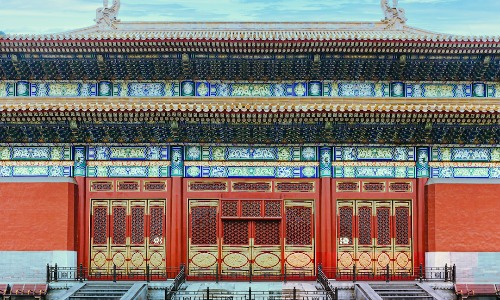Do you know Yoshiko Kawashima?
Yoshiko Kawashima was born in Beijing in 1907 as the 14th princess of Prince Su, a member of the Qing Dynasty imperial family.
Her real name was Aixinjueluo Xianzhi.
It was the end of the Qing dynasty, and her father was struggling in the court to make the Qing dynasty a constitutional monarchy like the Meiji Restoration in Japan, instead of the old absolute monarchy, in order for the dynasty to survive the times.
The first half of his life at the mercy of the Xinhai Revolution
However, when Yoshiko was four years old, the Xinhai Revolution took place and the Qing dynasty collapsed.
Her father hoped that Yoshiko would revive the Qing dynasty, and at the age of 7, he adopted her as an adopted daughter of the Kawashima family, a family member of the former Matsumoto clan who was a close friend of his father’s. The Kawashima family was a member of the Yihe Dan rebellion. The Kawashima family was trusted by her father because they acted as a kind of police force in Beijing, which was in turmoil following the suppression of the Yihe Dan Rebellion, and maintained public order. Yoshiko grew up in Japan. She lived in Asama Onsen, Matsumoto City, Nagano Prefecture.
She entered Matsumoto High School for Girls and famously rode a horse to school.
At the age of 20, she married the son of a Mongolian general, but they divorced soon after. One theory is that the son of the Mongolian general was not very enthusiastic about the restoration of the Qing dynasty.
The story goes that the son of the Mongolian general was not very enthusiastic about the restoration of the Qing dynasty.
A Life Betrayed by Two Mother Lands
Later, he was said to have cooperated with the Japanese military in various efforts to revive the Qing Dynasty. Although Manchukuo was established, Puyi was a puppet state, and the restoration of the Qing dynasty was far from certain. Yoshiko had been used for as long as she could be used, and the Japanese military ordered to get rid of her.
In 1948, the Chinese Kuomintang government had her executed by firing squad for being a traitor and a collaborator with the Japanese, even though she was Chinese.
After his execution, he left a poem in the pocket of his clothing.
Home but no return.
She has two homelands, China and Japan, but cannot return to either.
Her remains are now buried in Matsumoto City, Nagano Prefecture.
Yoshiko Kawashima portrayed in the movie The Last Emperor is not what she actually was.
In Bertolucci’s film “The Last Emperor,” Yoshiko Kawashima is portrayed as a lesbian who collaborated with the Japanese military, and as an opium addict herself, who encouraged the Empress Euphemia to take opium.
According to her high school classmates, Yoshiko Kawashima was not a lesbian and was an intelligent and strict person who would not have been addicted to opium. Above all, her father was a man who had educated his own children to learn Japanese in the hope of a constitutional monarchy by the Qing dynasty emperors, in the manner of the Meiji Restoration in Japan. It is impossible that a man who followed his father’s advice and devoted his entire life to the restoration of the Qing dynasty would have the empress of the Qing dynasty addicted to opium.
The books do not tell the truth.
Some books also say that she was raped by her adoptive father, Kawashima, because she cut her hair and dressed as a man when she was 17 years old. Yoshiko Kawashima was a person who was considering a political marriage with the son of a Mongolian general in order to rebuild the Qing Dynasty. I think this is a sign of her determination to fight if push came to shove. Kawashima was also a man who wanted to establish Manchukuo to protect Japan from Russian invasion. Such a person would never rape a Qing dynasty princess. Kawashima was the man who successfully negotiated alone to prevent the Forbidden City from being bombarded by the Allies during the Yihe Dan Rebellion. He also studied the outstanding cultural heritage of the Qing Dynasty in his hometown of Matsumoto.
My high school teacher also told me that although people say that Japan invaded China, we should not forget that there were Japanese who worked very hard to preserve the cultural heritage of the Qing dynasty.
There is a group called “In Memory of Yoshiko Kawashima.
Yoshiko Kawashima has been spoken of with various prejudices by Japanese, Chinese, and Italians. But I wanted people to know the true life and suffering of Yoshiko Kawashima and her message to us.
(A memorial service is held every year around March 25 at a temple in Matsumoto City.
